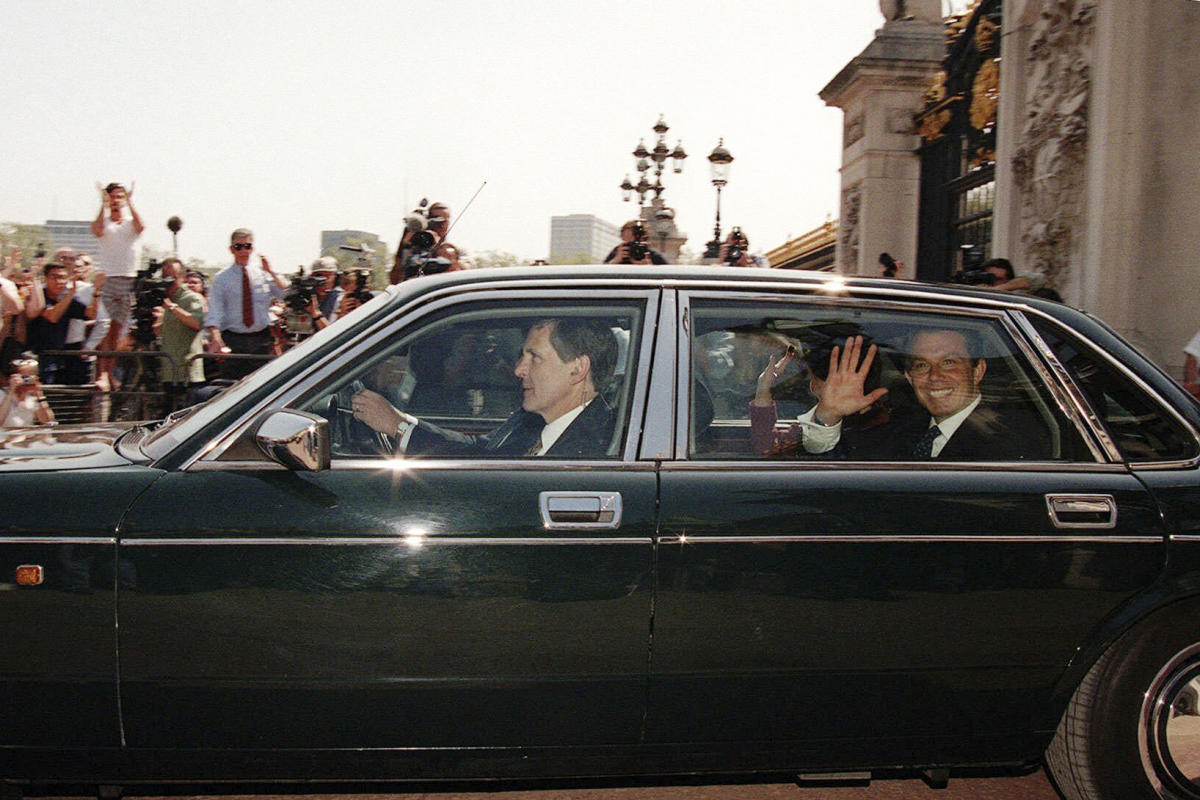LONDON (AP) — The Labour Party has won Britain's general election, bringing a new party to power for the first time in 14 years. But Labour leader Keir Starmer will only actually become prime minister after a carefully choreographed ceremony on Friday, in which King Charles III will formally request him to form a new government.
It is a moment that shows that the right to govern in the UK, technically at least, still flows from the royal prerogative, centuries after real political power was devolved to elected members of parliament.
The process is moving quickly, if somewhat brutally for outgoing Prime Minister Rishi Sunak. Here’s how the ceremonial events will unfold.
History meets the modern world
Although Britain is a constitutional monarchy, where the monarch’s power is strictly limited by law and tradition, much of what happens here is reminiscent of the past. In this case, the process harks back to a time when the monarch wielded ultimate power and chose his most senior minister — the prime minister — to lead his government.
Today, the prime minister is the leader of the party that has a majority in the House of Commons, but formally he or she must still be offered the position by the monarch, said Anna Whitelock, professor of monarchical history at City University in London.
“It reflects our historical past and it reflects the fact that we have a constitutional monarchy, a parliamentary democracy, and the prime minister and the monarch therefore work hand in hand,” she said. “Both play a key role in the constitution. And we see that proclaimed, on the day that a prime minister formally takes office.”
What's happening in the palace?
First, Sunak heads to Buckingham Palace to tender his resignation to the King, then Starmer arrives for his first audience with Charles.
“There's a small window between the outgoing prime minister and the official appointment of the new one, where technically for those few minutes the power is with the monarch,” Whitelock said. “So there's a brief window where there's effectively a kind of vacuum in terms of parliamentary democracy. … But of course there's that immediate moment when the new prime minister is appointed.”
This will happen when the future prime minister enters the palace for a ceremony known as the “Kissing of Hands”, although in reality no kiss takes place. After the king asks Starmer to form a government, he will bow and shake Charles' hand. A photo will be taken to capture the moment when power is transferred.
While there is no record of what was said between the monarch and the prime minister, there will be dramatic activity outside the palace gates. News helicopters will follow Starmer and Sunak’s cars to the palace and back. Commentators will usually breathlessly record their progress and speculate on what is said behind closed doors.
Traditionally, the new prime minister then leaves the palace in a prime ministerial car and returns to Downing Street to make a statement. He is applauded by his staff as he steps through the famous black door of Number 10 and begins the business of government.
And what about Sunak?
In Britain, voters' verdict is swift.
After suffering a heavy defeat in the election, Sunak will have to vacate the Prime Minister's official residence before Starmer arrives a few hours later.
The ex-prime minister-designate is driven to the palace in a chauffeured ministerial car. But after submitting his resignation, he leaves in a private vehicle and returns to his private residence.
The transition happens so quickly that the moving van for the outgoing leader is usually parked somewhere at the back door of Downing Street, while the new leader bows out front.
Why is the ceremony important?
The whole royal choreography shows, if anything, that the monarchy remains a symbol of stability and continuity at a time when deep divisions in society fuel raging political debates. The king, who is above the political fray, nevertheless runs the show — albeit ceremonially — and will continue to do so even after this prime minister is gone.
“Everyone will say, 'Well, this is the ceremonial part,' but it is a very important part of the fact that governments in the UK can change, and we don't do riots,” said George Gross, a royal expert at King's College London. “Perhaps that doesn't need to be said before, but in the context of the current political world and geopolitics, I think it's very healthy.”
During her 70-year reign, Queen Elizabeth II was served by 15 prime ministers. Charles, who has been on the throne for less than two years, is now welcoming his second.
“This is the pinnacle of power,” Gross said. “Ultimately, the monarchy is the continuity and prime ministers come and go.”
What happens now?
The King holds weekly meetings with the Prime Minister to discuss government affairs. Although the monarch is politically neutral, he still has the right to “advise and warn” the Prime Minister if he deems it necessary. These meetings are private and the matters discussed remain confidential.
The King will return to the public stage later this month for his next major royal event: the official opening of the Parliament Building.
Traditionally, the monarch arrives in a horse-drawn carriage, takes his seat on the monarch's throne in the House of Lords and wears the Imperial State Crown.
He will then deliver a speech written for him by the new government, setting out the legislative programme, at a joint sitting of the Houses of Lords and Commons.
It is a moment of pomp and circumstance, to be sure. But it is emblematic of the role of the monarchy in modern Britain.
___
Rhonda Shafner, an Associated Press researcher in New York, contributed to this report.
___
Follow AP's election coverage around the world: https://apnews.com/hub/global-elections/

